5D Bend Pipe
The radius of a 5D pipe bend is actually what is 5 times the nominal diameter.
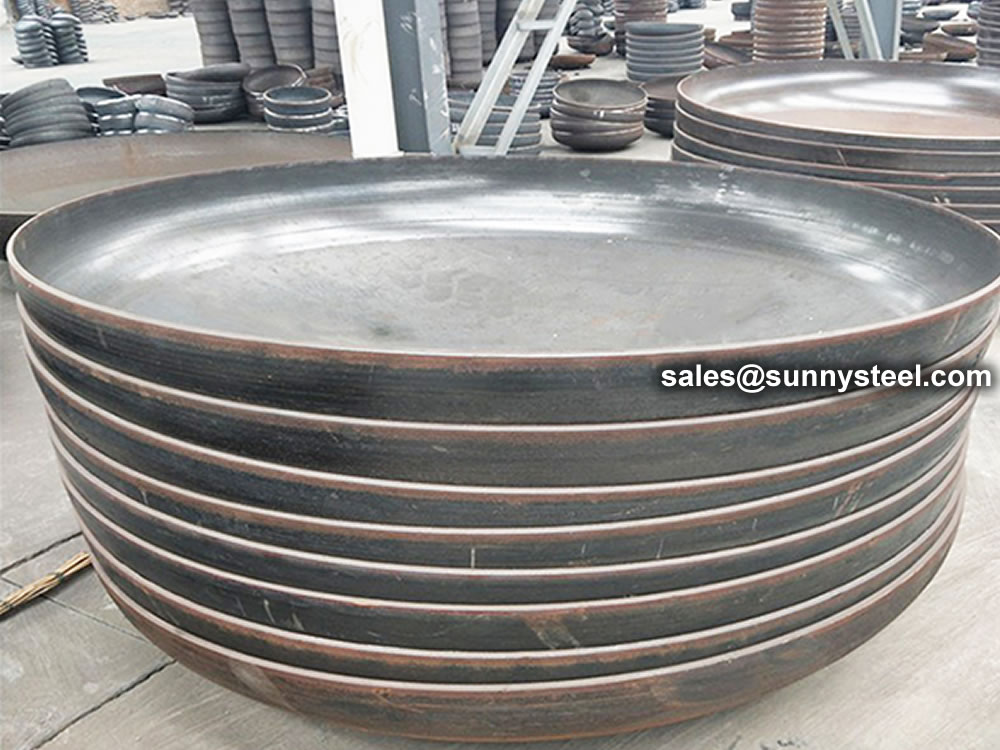
Torispherical head is a type of vessel head consisting of a dish with a toroidal section (spherical cap centered on the vessel) joined to a cylindrical section.
Download PDFTorispherical head (or flanged and dished head), These heads have a dish with a fixed radius (r1), the size of which depends on the type of torispherical head. The transition between the cylinder and the dish is called the knuckle. The knuckle has a toroidal shape.
These heads have a dish with a fixed radius, the size of which depends on the type of torispherical head. The transition between the cylinder and the dish is called the knuckle. The knuckle has a toroidal shape.
Vessel dished ends are mostly used in storage or pressure vessels in industry. These ends, which in upright vessels are the bottom and the top, use less space than a hemisphere (which is the ideal form for pressure containments) while requiring only a slightly thicker wall.

Torispherical head for boiler according DIN28011
Torispherical head are commonly used in the design and construction of tanks and pressure vessels that operate under high pressure conditions. They are typically used at the end of cylindrical vessels where the transition is made from the cylindrical part to the end closure.
Some common applications of elliptical heads include:
Torispherical head are widely used in various industries where pressure vessels, tanks, or heat exchangers are required to operate at high pressures and temperatures. The specific application, size, material, and thickness of an elliptical head depend on the requirements and design standards of the project.
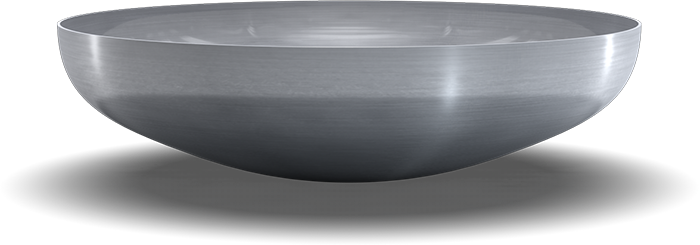
Compared with elliptical head, due to its easier manufacturing processes, the torispherical head is often used in addition to the pressure is larger diameter pressure vessel.
With the same same design conditions with the same design pressure, design temperature and material, your calculated wall thickness under internal pressure will be approximately half of the shell thickness.
For example, if you have calculated your shell thickness under internal pressure and obtained 12 mm, your hemispherical head thickness also will be approximately 6 mm.
The inside depth of your Torispherical head will be one-half of head inside diameter (h = D/2).
You need to make a dimensional inspection on the pressure Torispherical head for any effort for the fit-up process. The dimensional inspection is done on the knuckle radius, crown radius, skirt length, depth and thickness.
We are manufacturer of End caps 48inch api 5l x46 carbon steel din28011 and supply high quality End caps 48inch api 5l x46 carbon steel din28011 in both large and small quantities worldwide and offer you the best prices in the market.
Pipeline steel plate API 5L PSL1 X46 and Pipeline steel coil API 5L PSL1 X46 are mainly used in making steel pipes for pipeline which transporting oil and gas.
Technical Requirements & Additional Services:
DIN 28011 is a German standard that specifies the design and dimensions of torispherical heads.
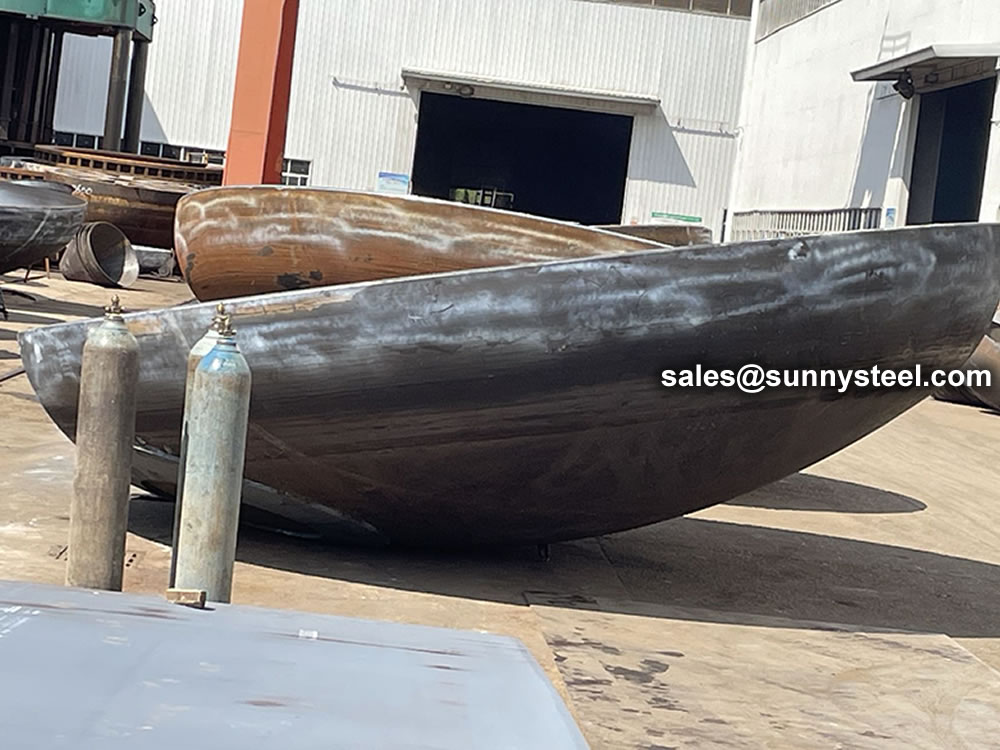
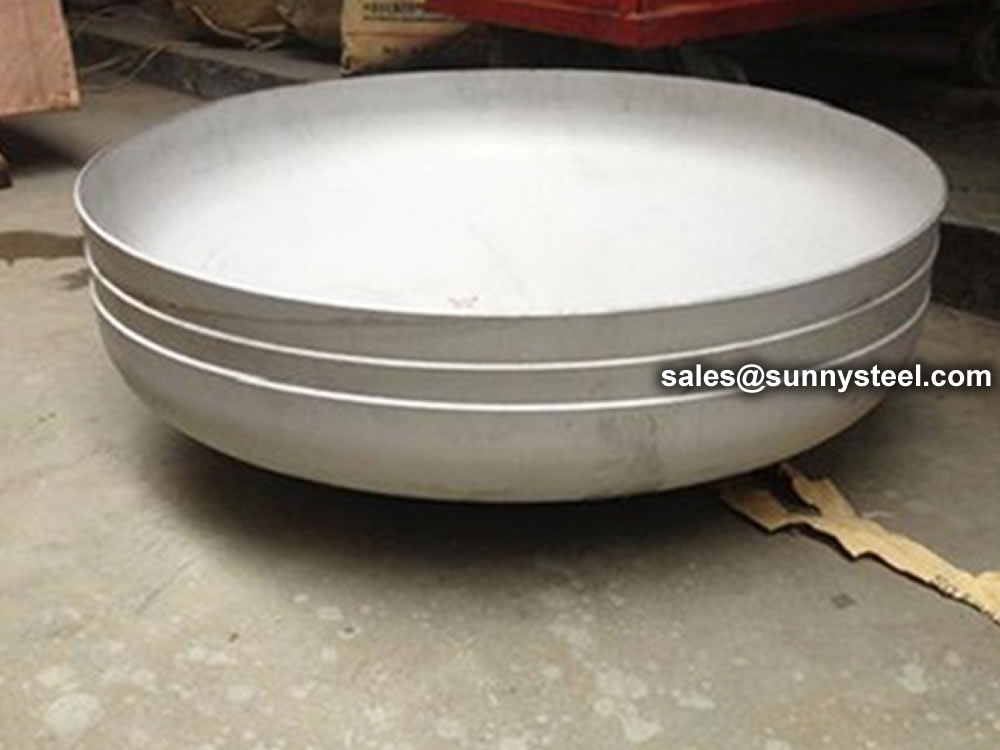
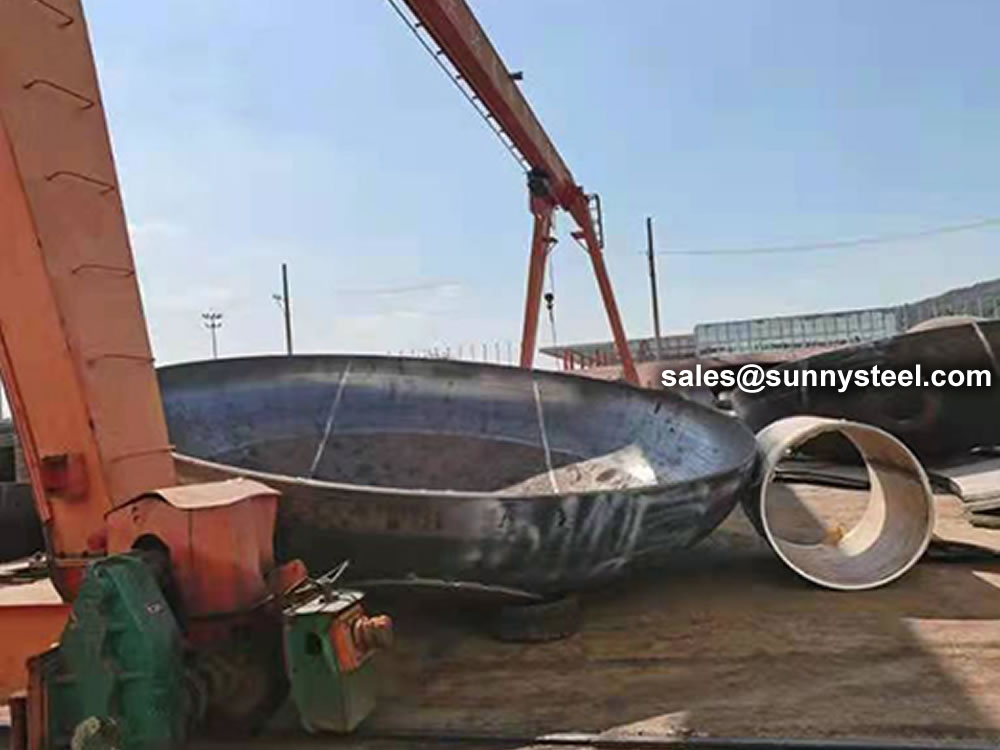
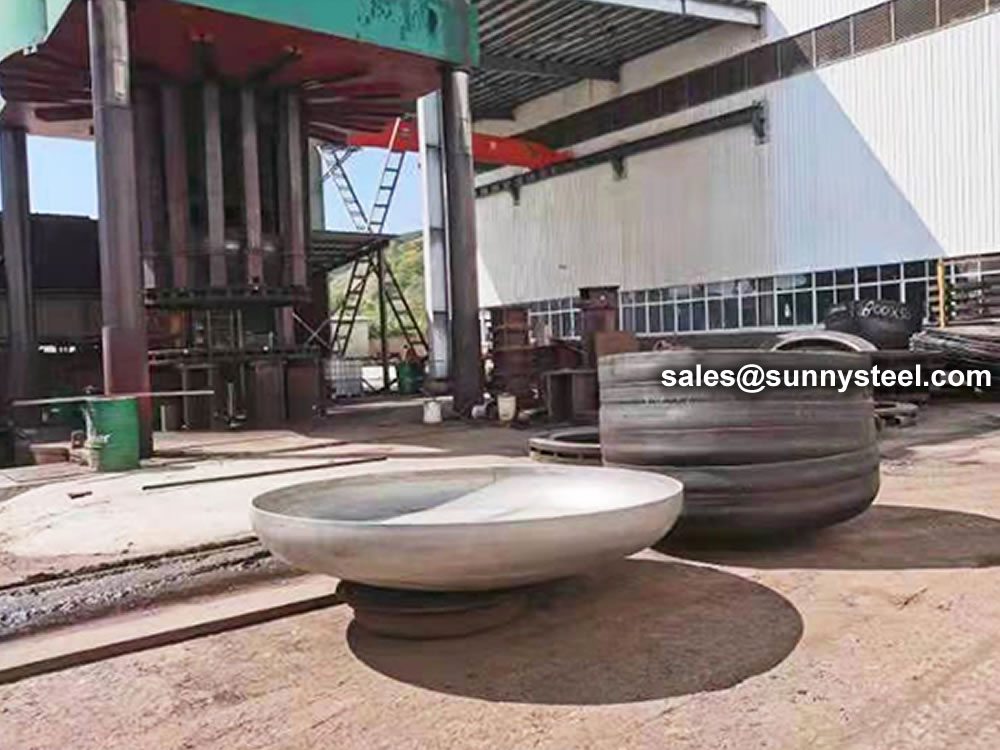
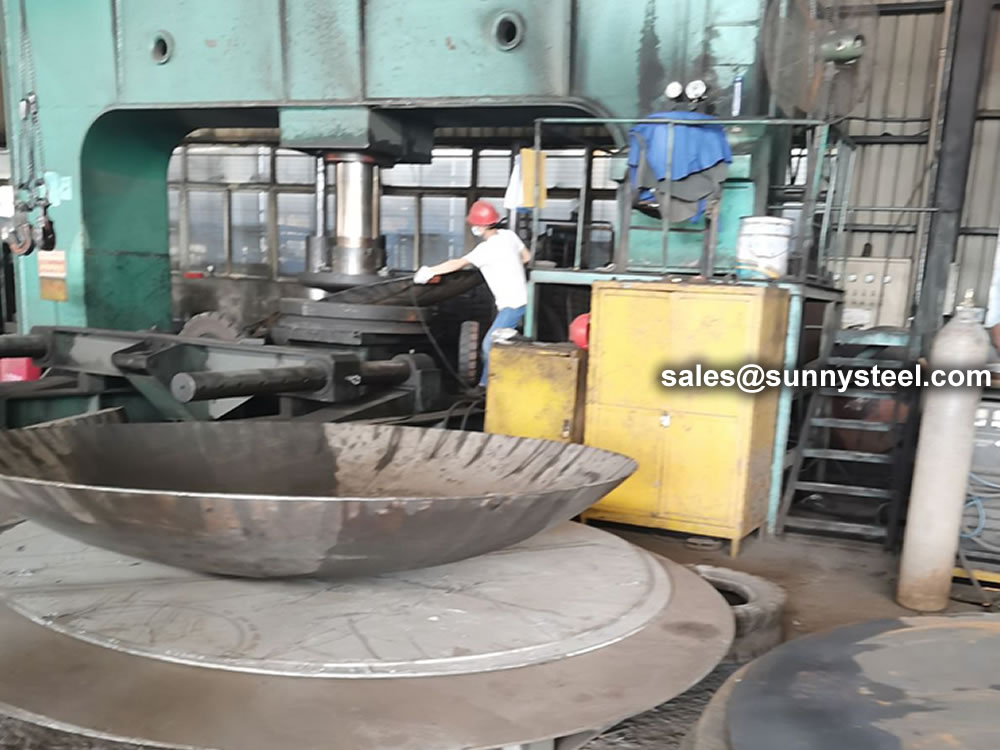
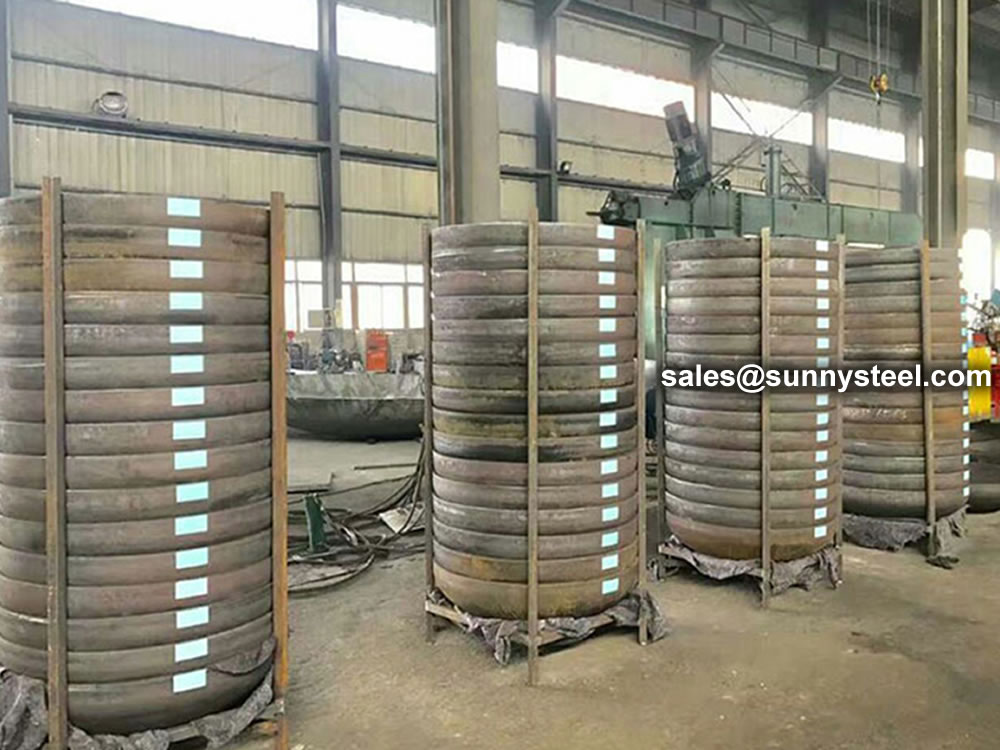
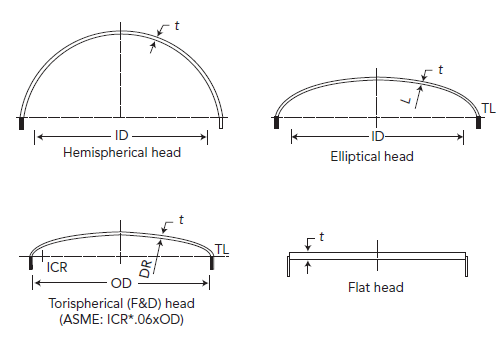
Elliptical heads and torispherical heads are two types of products, so there is no doubt that they are different in terms of shape and design. In addition, there are also many differences in the machining process, and it is obvious that torispherical heads are much easier to machine. The ellipsoidal head is deformed under pressure, which means that it tends to produce opposite radial displacement in the joint. The torispherical head, on the other hand, is formed by the stamping process, which is basically not difficult.
The bending radius of ellipsoidal head is continuous and no stress is generated, so it can be used in higher pressure vessels; while the joint of disc-shaped head is discontinuous and stress exists, so this type of head is chosen for low pressure vessels. But as far as stress is concerned it is better to have ellipsoidal heads, but the metal consumption of torispherical heads will be lower.
The ellipsoidal head with the ratio of the long axis to the short axis of the rotating ellipsoidal sphere bus is 2.0, which is usually called standard ellipsoidal head. The mechanical properties of ellipsoidal heads are second only to those of hemispherical heads but better than those of disc-shaped heads. As the depth of ellipsoidal head is between that of hemispherical head and disc-shaped head, the requirements for stamping equipment and moulds as well as the manufacturing difficulty are also between them, i.e., it is easier than hemispherical head and more difficult than disc-shaped head. In recent years, the adoption of spinning manufacturing process has brought convenience to the manufacture of large diameter ellipsoidal heads. Elliptical heads are widely used for medium and low pressure vessels due to their better overall performance.
The elliptical head is a very well stressed head as better technology has been adopted in recent years and it is easier to manufacture larger elliptical heads. As a result, its overall performance is very good and it is suitable for low and medium pressure vessels. It is easier to use and better made.
Elliptical head, also called oval head, consists of half ellipsoidal sphere and cylindrical straight side part. It has the advantages of good force on the head of hemispherical head and shallow depth on the head of disc-shaped head. As the curvature of the elliptical bend is smooth and continuous, the stresses in the head are distributed relatively evenly.
The disc-shaped head, also known as a spherical head with sides. It consists of a spherical surface, a cylindrical straight edge of a certain height and a transition part which connects the above two parts and whose radius of curvature is smaller than the radius of the spherical surface.
An elliptical head is stronger than a dished head, but an elliptical head of the same diameter is somewhat deeper than a dished one and is slightly more difficult to manufacture than a dished head. It consumes more materials and costs a bit more, and the difference in volume remains small.
If you choose ellipsoidal head and disc-shaped head which conform to JB4746 "Head for Steel Pressure Vessel" standard, it is relatively better to use ellipsoidal head because the wall thickness calculated by ellipsoidal head for the same pressure, temperature and diameter according to GB150 is smaller than that elected with non-standard ellipsoidal head.
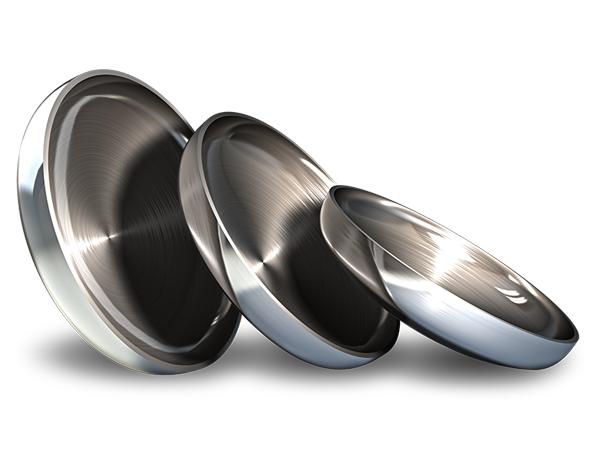
Pipe caps fit over or are welded onto the end of a pipe, providing a liquid or gas tight seal.
End Caps are used for connecting pipes of different diameters and find wide applications in various chemicals, construction industries, paper, cement & ship builders.
Pipe caps are widely well-known for the utmost output and outstanding results that it gives.
It is commonly made from the one steel plate, so it should be seamless. The pipe end caps are available in various shapes, like the hemispherical, oval, round etc.
Before purchasing pipe caps in bulk, the buyer should take into account a number of crucial criteria. The following crucial requirements must be taken into account:
This characteristic is appropriate for caps with a round form when the item that has to be protected has a male NPT thread.
This size choice is only appropriate for caps with a round form and a male BSP thread on the item to be capped.
Only round caps and plugs may be made with this crucial size. The primary thread diameter is the most crucial factor to take into account when fittings have straight threads. However, when a cap, plug, or item to be capped has a tapered (NPT or BSP) thread, its size is not a crucial factor to take into account.
The size and shape of pipe caps are other crucial factors to take into account. distinct pipe caps have distinct features. Features include:
Round Caps: The flange, slotted head, knurled or faceted head, retaining head, and tear tab are all common characteristics of round caps. A flange is designed to make it simple to remove pipes or tubes or to provide additional protection. Additionally, flanges aid in preventing inadvertent plug ejection through the aperture. A screwdriver makes it simple to put on or take off slotted caps. Typically, only threaded caps and plugs are intended to be used with knurled or faceted heads. Installation and removal are hassle-free using facets or knurls. It is simple to remove pipe caps that have a tear-tab or strip supplied.
Square or Rectangular Cap: When choosing a square or rectangular cap, the length and breadth should be taken into account the most. For square caps, the length and breadth are the same dimension, but the width is the smaller cross sectional measurement for rectangular caps.
End cap is commonly made from the one steel plate, so it should be seamless. The pipe end caps are available in various shapes, like the hemispherical, oval, round etc.
| Out diameter | High size | Wall thickness accord to 'E' | ||
|---|---|---|---|---|
| DN | NPS | E | E1 | E |
| 15 | 1/2 | 25 | 25 | 3.73 |
| 20 | 3/4 | 25 | 25 | 3.91 |
| 25 | 1 | 38 | 38 | 4.55 |
| 32 | 1 1/4 | 38 | 38 | 4.85 |
| 40 | 1 1/2 | 38 | 38 | 5.08 |
| 50 | 2 | 38 | 44 | 5.54 |
| 65 | 2 1/2 | 38 | 51 | 7.01 |
| 80 | 3 | 51 | 64 | 7.62 |
| 90 | 3 1/2 | 64 | 76 | 8.08 |
| 100 | 4 | 64 | 76 | 8.56 |
| 125 | 5 | 76 | 89 | 9.53 |
| 150 | 6 | 89 | 102 | 10.97 |
| 200 | 8 | 102 | 127 | 12.7 |
| 250 | 10 | 127 | 152 | 12.7 |
| 300 | 12 | 152 | 178 | 12.7 |
| 350 | 14 | 165 | 191 | 12.7 |
| 400 | 16 | 178 | 203 | 12.7 |
| 450 | 18 | 203 | 229 | 12.7 |
| 500 | 20 | 229 | 254 | 12.7 |
| 550 | 22 | 254 | 254 | 12.7 |
| 600 | 24 | 267 | 305 | 12.7 |
| 650 | 26 | 267 | ||
| 700 | 28 | 267 | ||
| 750 | 30 | 267 | ||
| 800 | 32 | 267 | ||
| 850 | 34 | 267 | ||
| 900 | 36 | 267 | ||
| 950 | 38 | 305 | ||
| 1000 | 40 | 305 | ||
| 1050 | 42 | 305 | ||
| 1100 | 44 | 343 | ||
| 1150 | 46 | 343 | ||
| 1200 | 48 | 343 | ||
Size range: 1/2 to 56 inches (DN15 to DN1400)
Pressure: SCH5 to SCH160v
Wall Thickness:sch10, sch20, sch30, std, sch40, sch60, xs, sch80, sch100, sch120, sch140, sch160, xxs, sch5s, sch20s, sch40s, sch80s
Max. wall thickness: 200mm
| OD | ND | INCH | SCH20 | SCH40 | SCH80 | STD | XS |
|---|---|---|---|---|---|---|---|
| Weight | Weight | Weight | Weight | Weight | |||
| 88.9 | 80 | 3 | 0.66 | 0.92 | 0.66 | 0.92 | |
| 114.3 | 100 | 4 | 1.17 | 1.67 | 1.17 | 1.67 | |
| 141.3 | 125 | 5 | 1.91 | 2.78 | 1.91 | 2.78 | |
| 168.3 | 150 | 6 | 2.9 | 4.47 | 2.9 | 4.47 | |
| 219.1 | 200 | 8 | 4.09 | 5.19 | 8.05 | 5.19 | 8.05 |
| 273 | 250 | 10 | 6.36 | 9.15 | 12.5 | 9.15 | 12.5 |
| 323.8 | 300 | 12 | 9.08 | 14.4 | 26.8 | 13.2 | 17.3 |
| 355.6 | 350 | 14 | 13.2 | 18.8 | 34.5 | 15.9 | 20.4 |
| 406.4 | 400 | 16 | 16.8 | 26.7 | 47.7 | 20.4 | 26.3 |
| 457.2 | 450 | 18 | 24.8 | 41.8 | 67.7 | 25.9 | 33.6 |
| 508 | 500 | 20 | 32.2 | 54.9 | 91.3 | 32.2 | 42.7 |
| 558.8 | 550 | 22 | 37.7 | 49.9 | |||
| 609.6 | 600 | 24 | 46.3 | 93.1 | 155 | 46.3 | 59.5 |
Based on different materials, pipe caps include carbon steel cap, stainless steel cap, and alloy steel cap etc.
Depending on their construction, pipe caps contain threaded cap, tapered cap and anti-roll cap etc.

| Outside diameter mm |
Wall thickness mm |
Height mm |
Weight kg |
|---|---|---|---|
| D | s1 | ||
| 21,3 | 2,0 | 25,0 | 0,060 |
| 26,9 | 2,3 | 32,0 | 0,070 |
| 33,7 | 2,6 | 38,0 | 0,110 |
| 3,2 | 0,130 | ||
| 42,4 | 2,6 | 38,0 | 0,130 |
| 3,6 | 0,170 | ||
| 48,3 | 2,6 | 38,0 | 0,200 |
| 4,0 | 0,230 | ||
| 60,3 | 2,9 | 38,0 | 0,280 |
| 4,5 | 0,320 | ||
| 76,1 | 2,9 | 38,0 | 0,340 |
| 5,0 | 0,390 | ||
| 88,9 | 3,2 | 51,0 | 0,530 |
| 5,6 | 0,700 | ||
| 108,0 | 3,6 | 64,0 | 1,000 |
| 114,3 | 3,6 | 64,0 | 1,000 |
| 6,3 | 1,500 | ||
| 133,0 | 4,0 | 76,0 | 1,600 |
| 139,7 | 4,0 | 76,0 | 1,700 |
| 6,3 | 2,500 | ||
| 159,0 | 4,5 | 90,0 | 2,400 |
| 168,3 | 4,5 | 89,0 | 2,650 |
| 7,1 | 3,550 | ||
| 219,0 | 6,3 | 100,0 | 5,550 |
| 8,0 | 6,700 | ||
| 273,0 | 6,3 | 127,0 | 8,800 |
| 323,9 | 7,1 | 152,0 | 14,000 |
| 355,6 | 8,0 | 165,0 | 16,500 |
| 406,4 | 8,8 | 178,0 | 18,200 |
| 508,0 | 11,0 | 229,0 | 38,000 |

ISO - dimensions
| dimensions d1 x s | height L | weight / kg |
|---|---|---|
| 21,3 x 2,0 | 9,0 | 0,01 |
| 26,9 x 2,0 | 9,0 | 0,01 |
| 33,7 x 2,0 | 13,0 | 0,02 |
| 42,4 x 2,0 | 13,0 | 0,04 |
| 48,3 x 2,0 | 13,5 | 0,05 |
| 60,3 x 2,0 | 18,5 | 0,07 |
| 76,1 x 2,0 | 20,5 | 0,10 |
| 88,9 x 2,0 | 25,0 | 0,15 |
| 114,3 x 2,0 | 28,0 | 0,26 |
| 114,3 x 3,0 | 29,0 | 0,39 |
| 139,7 x 3,0 | 38,5 | 0,60 |
| 168,3 x 3,0 | 47,5 | 0,90 |
| 219,1 x 3,0 | 63,5 | 1,32 |
| 273,0 x 3,0 | 93,0 | 1,95 |
| 323,9 x 3,0 | 102,0 | 2,70 |
| 355,6 x 3,0 | 109,0 | 3,80 |
| 406,4 x 3,0 | 123,0 | 5,00 |
| 457,2 x 3,0 | 123,0 | 6,10 |
| 508,0 x 3,0 | 133,0 | 7,60 |
| dimensions d1 x s | height L | weight / kg |
|---|---|---|
| 20,0 x 2,0 | 9,0 | 0,02 |
| 25,0 x 2,0 | 9,0 | 0,03 |
| 30,0 x 2,0 | 13,5 | 0,03 |
| 35,0 x 2,0 | 13,5 | 0,04 |
| 44,0 x 2,0 | 15,0 | 0,04 |
| 54,0 x 2,0 | 15,0 | 0,05 |
| 70,0 x 2,0 | 19,5 | 0,07 |
| 84,0 x 2,0 | 24,0 | 0,15 |
| 104,0 x 2,0 | 28,0 | 0,20 |
| 129,0 x 2,0 | 37,0 | 0,36 |
| 154,0 x 2,0 | 43,0 | 0,50 |
| 156,0 x 3,0 | 44,0 | 0,94 |
| 204,0 x 2,0 | 62,0 | 0,80 |
| 206,0 x 3,0 | 63,0 | 1,20 |
| 254,0 x 2,0 | 72,0 | 1,30 |
| 256,0 x 3,0 | 73,0 | 1,95 |
| 306,0 x 3,0 | 83,0 | 2,50 |
| Out diameter | High size | Wall thickness accord to 'E' | ||
|---|---|---|---|---|
| DN | NPS | E | E1 | E |
| 15 | 1/2 | 25 | 25 | 3.73 |
| 20 | 3/4 | 25 | 25 | 3.91 |
| 25 | 1 | 38 | 38 | 4.55 |
| 32 | 1 1/4 | 38 | 38 | 4.85 |
| 40 | 1 1/2 | 38 | 38 | 5.08 |
| 50 | 2 | 38 | 44 | 5.54 |
| 65 | 2 1/2 | 38 | 51 | 7.01 |
| 80 | 3 | 51 | 64 | 7.62 |
| 90 | 3 1/2 | 64 | 76 | 8.08 |
| 100 | 4 | 64 | 76 | 8.56 |
| 125 | 5 | 76 | 89 | 9.53 |
| 150 | 6 | 89 | 102 | 10.97 |
| 200 | 8 | 102 | 127 | 12.7 |
| 250 | 10 | 127 | 152 | 12.7 |
| 300 | 12 | 152 | 178 | 12.7 |
| 350 | 14 | 165 | 191 | 12.7 |
| 400 | 16 | 178 | 203 | 12.7 |
| 450 | 18 | 203 | 229 | 12.7 |
| 500 | 20 | 229 | 254 | 12.7 |
| 550 | 22 | 254 | 254 | 12.7 |
| 600 | 24 | 267 | 305 | 12.7 |
| 650 | 26 | 267 | ||
| 700 | 28 | 267 | ||
| 750 | 30 | 267 | ||
| 800 | 32 | 267 | ||
| 850 | 34 | 267 | ||
| 900 | 36 | 267 | ||
| 950 | 38 | 305 | ||
| 1000 | 40 | 305 | ||
| 1050 | 42 | 305 | ||
| 1100 | 44 | 343 | ||
| 1150 | 46 | 343 | ||
| 1200 | 48 | 343 | ||
| D(inch) | DN | OD | SCH5s | SCH10s | SCH10 | SCH20 | SCH30 | SCH40s | STD | SCH40 |
|---|---|---|---|---|---|---|---|---|---|---|
| 1/8" | 6 | 10.3 | - | 1.24 | 1.73 | 1.73 | 1.73 | |||
| 1/4" | 8 | 13.7 | - | 1.65 | - | - | - | 2.24 | 2.24 | 2.24 |
| 3/8" | 10 | 17.1 | - | 1.65 | - | - | - | 2.31 | 2.31 | 2.31 |
| 1/2" | 15 | 21.3 | 1.65 | 2.11 | - | - | - | 2.77 | 2.77 | 2.77 |
| 3/4" | 20 | 26.7 | 1.65 | 2.11 | - | - | - | 2.87 | 2.87 | 2.87 |
| 1" | 25 | 33.4 | 1.65 | 2.77 | - | - | - | 3.38 | 3.38 | 3.38 |
| 11/4" | 32 | 42.2 | 1.65 | 2.77 | - | - | - | 3.56 | 3.56 | 3.56 |
| 11/2" | 40 | 48.3 | 1.65 | 2.77 | - | - | - | 3.68 | 3.68 | 3.68 |
| 2" | 50 | 60.3 | 1.65 | 2.77 | - | - | - | 3.91 | 3.91 | 3.91 |
| 21/2" | 65 | 73 | 2.11 | 3.05 | - | - | - | 5.16 | 5.16 | 5.16 |
| 3" | 80 | 88.9 | 2.11 | 3.05 | - | - | - | 5.49 | 5.49 | 5.49 |
| 31/2" | 90 | 101.6 | 2.11 | 3.05 | - | - | - | 5.74 | 5.74 | 5.74 |
| 4" | 100 | 114.3 | 2.11 | 3.05 | - | - | - | 6.02 | 6.02 | 6.02 |
| 5" | 125 | 141.3 | 2.77 | 3.4 | - | - | - | 6.55 | 6.55 | 6.55 |
| 6" | 150 | 168.3 | 2.77 | 3.4 | - | - | - | 7.11 | 7.11 | 7.11 |
| 8" | 200 | 219.1 | 2.77 | 3.76 | - | 6.35 | 7.04 | 8.18 | 8.18 | 8.18 |
| 10" | 250 | 273.1 | 3.4 | 4.19 | - | 6.35 | 7.8 | 9.27 | 9.27 | 9.27 |
| 12" | 300 | 323.9 | 3.96 | 4.57 | - | 6.35 | 8.83 | 9.53 | 9.53 | 10.31 |
| 14" | 350 | 355.6 | 3.96 | 4.78 | 6.35 | 7.92 | 9.53 | - | 9.53 | 11.13 |
| 16" | 400 | 406.4 | 4.19 | 4.78 | 6.35 | 7.92 | 9.53 | - | 9.53 | 12.7 |
| 18" | 450 | 457.2 | 4.19 | 4.78 | 6.35 | 7.92 | 11.13 | - | 9.53 | 14.27 |
| 20" | 500 | 508 | 4.78 | 5.54 | 6.35 | 9.53 | 12.7 | - | 9.53 | 15.09 |
| 22" | 550 | 558.8 | 4.78 | 5.54 | 6.35 | 9.53 | 12.7 | - | 9.53 | |
| 24" | 600 | 609.6 | 5.54 | 6.35 | 6.35 | 9.53 | 14.27 | - | 9.53 | 17.48 |
| 26" | 650 | 660.4 | - | - | 7.92 | 12.7 | - | - | 9.53 | - |
| 28" | 700 | 711.2 | - | - | 7.92 | 12.7 | 15.88 | - | 9.53 | - |
| 30" | 750 | 762 | 6.35 | 7.92 | 7.92 | 12.7 | 15.88 | - | 9.53 | - |
| 32" | 800 | 812.8 | - | - | 7.92 | 12.7 | 15.88 | - | 9.53 | 17.48 |
| 34" | 850 | 863.6 | - | - | 7.92 | 12.7 | 15.88 | - | 9.53 | 17.48 |
| 36" | 900 | 914.4 | - | - | 7.92 | 12.7 | 15.88 | - | 9.53 | 19.05 |
| 38" | 950 | 965.2 | - | - | - | - | - | - | 9.53 | - |
| 40" | 1000 | 1016 | - | - | - | - | - | - | 9.53 | - |
| 42" | 1050 | 1066.8 | - | - | - | - | - | - | 9.53 | - |
| 44" | 1100 | 1117.6 | - | - | - | - | - | - | 9.53 | - |
| 46" | 1150 | 1168.4 | - | - | - | - | - | - | 9.53 | - |
| 48" | 1200 | 1219.2 | - | - | - | - | - | - | 9.53 | - |
Pipe fitting dimensions are in either metric or Standard English.
Because pipe fitting covers Pipe Fitting Dimensions several aspects, only the most common pipe fitting sizes can be given here. The most applied version is the 90° long radius and the 45° elbow, while the 90° short radius elbow is applied if there is too little space. The function of a 180° elbow is to change direction of flow through 180°. Both, the LR and the SR types have a center to center dimension double the matching 90° elbows. These fittings will generally be used in furnesses or other heating or cooling units.
Some of the standards that apply to buttwelded fittings are listed below. Many organizations such as ASME, ASTM, ISO, MSS, etc. have very well developed standards and specifications for buttwelded fittings. It is always up to the designer to ensure that they are following the applicable standard and company specification, if available, during the design process.
Some widely used pipe fitting standards are as follows:
This is one of the reputed organizations in the world developing codes and standards.
The schedule number for pipe fitting starts from ASME/ANSI B16. The various classifications of ASME/ANSI B16 standards for different pipe fittings are as follows:
This is one of the largest voluntary standards development organizations in the world. It was originally known as the American Society for Testing and Materials (ASTM).
AWWA About – Established in 1881, the American Water Works Association is the largest nonprofit, scientific and educational association dedicated to managing and treating water, the world’s most important resource.
ANSI is a private, non-profit organization. Its main function is to administer and coordinate the U.S. voluntary standardization and conformity assessment system. It provides a forum for development of American national standards. ANSI assigns “schedule numbers”. These numbers classify wall thicknesses for different pressure uses.
The Manufacturers Standardization Society (MSS) of the Valve and Fittings Industry is a non-profit technical association organized for development and improvement of industry, national and international codes and standards for: Valves, Valve Actuators, Valve Modification, Pipe Fittings, Pipe Hangers, Pipe Supports, Flanges and Associated Seals
Piping codes imply the requirements of design, fabrication, use of materials, tests and inspection of various pipe and piping system. It has a limited jurisdiction defined by the code. On the other hand, piping standards imply application design and construction rules and requirements for pipe fittings like adapters, flanges, sleeves, elbows, union, tees, valves etc. Like a code, it also has a limited scope defined by the standard.
“Standards” on pipe fittings are based on certain factors like as follows:
BSP is the U.K. standard for pipe fittings. This refers to a family of standard screw thread types for interconnecting and sealing pipe ends by mating an external (male) with an internal (female) thread. This has been adopted internationally. It is also known as British Standard Pipe Taper threads (BSPT )or British Standard Pipe Parallel (Straight) threads (BSPP ). While the BSPT achieves pressure tight joints by the threads alone, the BSPP requires a sealing ring.
This is the Japanese industrial standards or the standards used for industrial activities in Japan for pipe, tube and fittings and published through Japanese Standards Associations.
National Pipe Thread is a U.S. standard straight (NPS) threads or for tapered (NPT) threads. This is the most popular US standard for pipe fittings. NPT fittings are based on the internal diameter (ID) of the pipe fitting.
We are manufacturer of Flange bolts & Nuts and supply high quality
The AN standard was originally designed for the U.S. Military. Whenever, a pipe fitting is AN fittings, it means that the fittings are measured on the outside diameter of the fittings, that is, in 1/16 inch increments.
For example, an AN 4 fitting means a fitting with an external diameter of approximately 4/16″ or ¼”. It is to be noted that approximation is important because AN external diameter is not a direct fit with an equivalent NPT thread.
Dash size is the standard used to refer to the inside diameter of a hose. This indicates the size by a two digit number which represents the relative ID in sixteenths of an inch. This is also used interchangeably with AN fittings. For example, a Dash “8” fitting means an AN 8 fitting.
ISO is the industrial pipe, tube and fittings standards and specifications from the International Organization for Standardization. ISO standards are numbered. They have format as follows:
“ISO[/IEC] [IS] nnnnn[:yyyy] Title” where
| Standard | Specification |
|---|---|
| ASTM A234 | Standard Specification for Piping Fittings of Wrought Carbon Steel and Alloy Steel for Moderate and High Temperature Service |
| ASTM A420 | Standard Specification for Piping Fittings of Wrought Carbon Steel and Alloy Steel for Low-Temperature Service |
| ASTM A234 WPB | ASTM A234 WPB refers to a specific grade of carbon steel pipe fittings, which are widely used in pressure piping and pressure vessel fabrication for service at moderate and elevated temperatures. |
| ASME B16.9 | ASME B16.9 Standard covers overall dimensions, tolerances,ratings, testing, and markings for factory-made wrought buttwelding fittings in sizes NPS 1⁄2 through NPS 48 (DN 15 through DN 1200). |
| ASME B16.28 | ASME B16.28 Standard covers ratings, overall dimensions, testing, tolerances, and markings for wrought carbon and alloy steel buttwelding short radius elbows and returns. |
| MSS SP-97 | MSS SP-97 Standard Practice covers essential dimensions, finish, tolerances, testing, marking, material, and minimum strength requirements for 90 degree integrally reinforced forged branch outlet fittings of buttwelding, socket welding, and threaded types. |
| ASTM A403 | Standard Specification for Wrought Austenitic Stainless Steel Piping Fittings. |
| DIN | EN | ASME |
|---|---|---|
| St 35.8 I St 35.8 III 15 Mo 3 13 CrMo 4 4 10 CrMo 9 10 St 35 N St 52.0 St 52.4 |
P235GH-TC1 P235GH-TC2 16Mo3 13CrMo4-5 10CrMo9-10 X10CrMoVNb9-1 P215NL P265NL L360NB L360NE P355N P355NL1 P355NH |
WPB WPL6 WPL3 WPHY 52 WP11 WP22 WP5 WP9 WP91 WP92 |
Visual Inspection is conducted on fittings to check any surface imperfections. Both fittings body and weld are checked for any visible surface imperfections such as dents, die marks, porosity, undercuts, etc. Acceptance as per applicable standard.
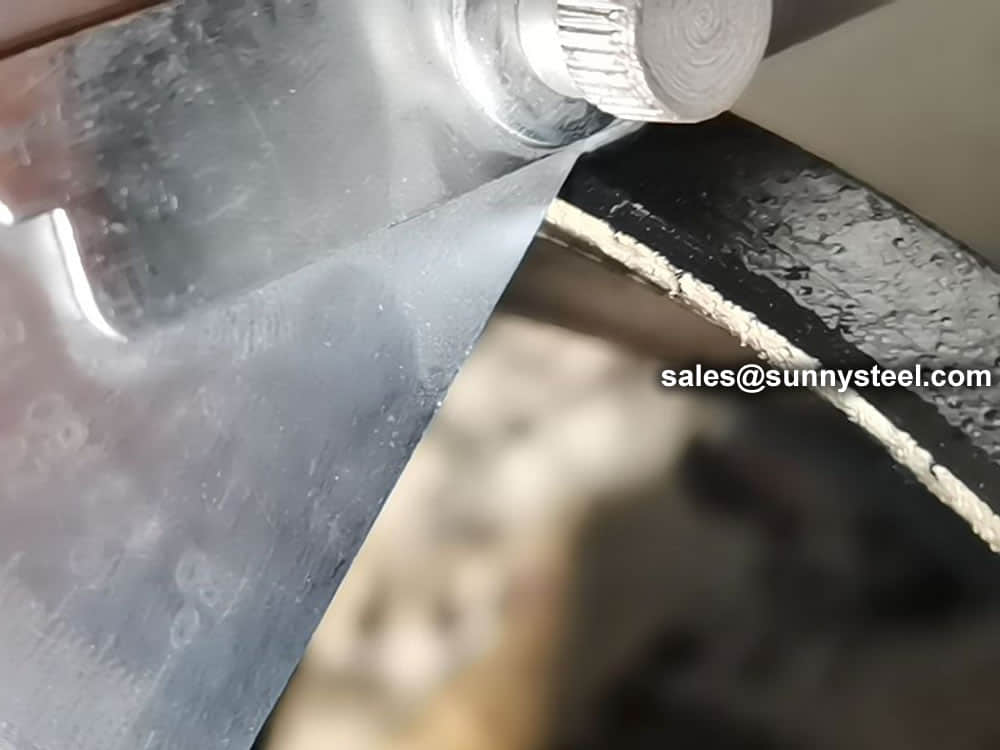
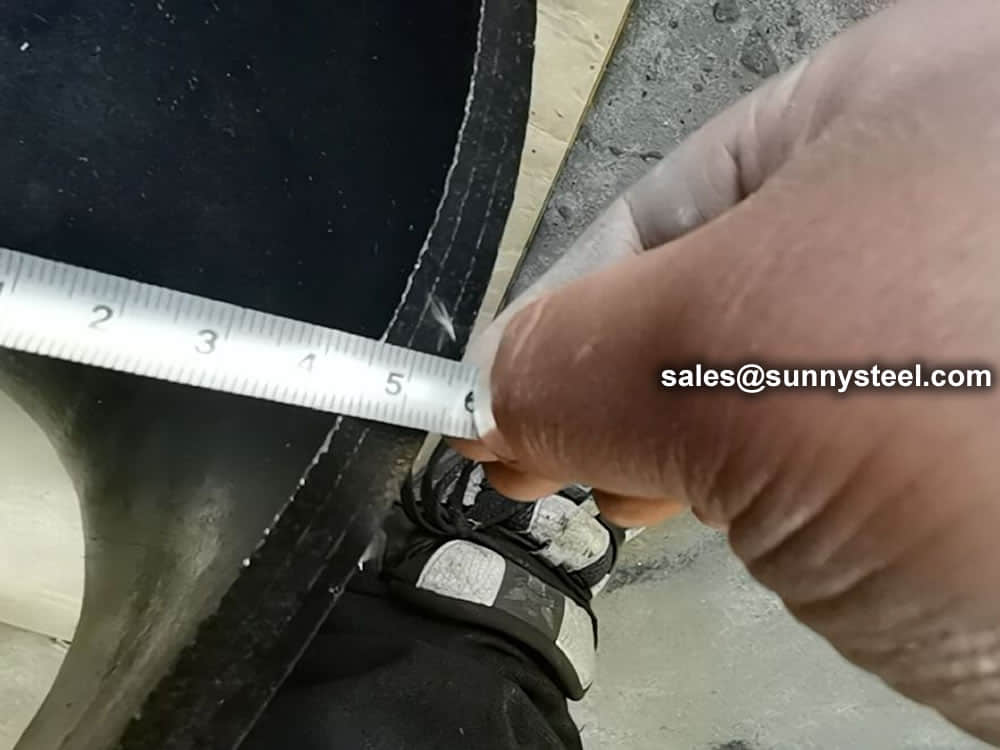
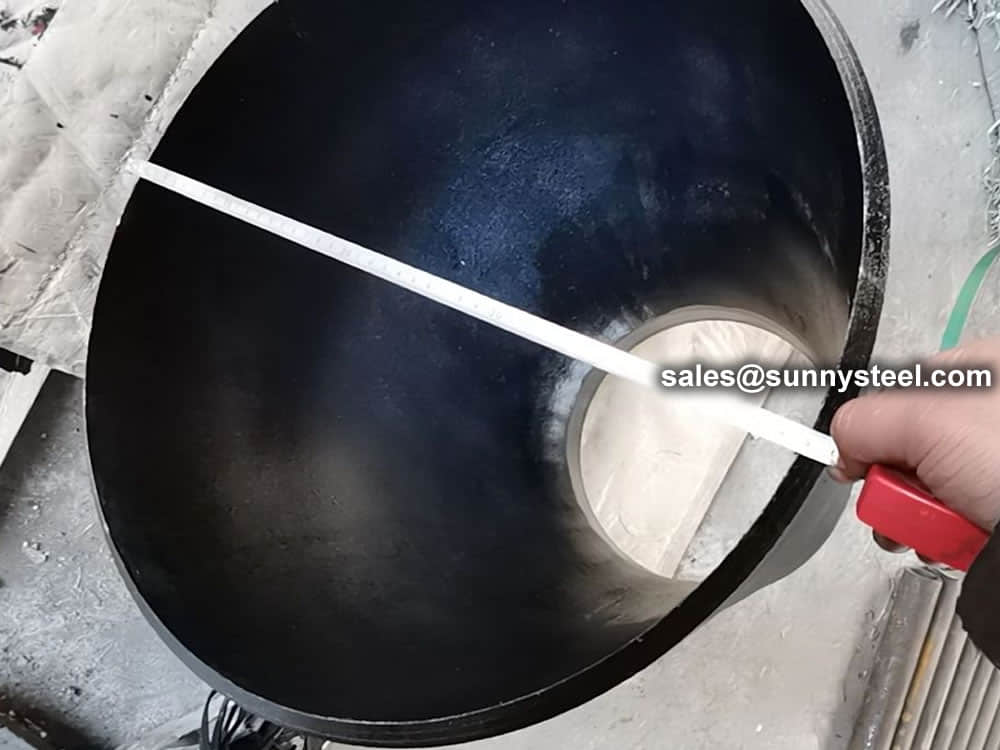
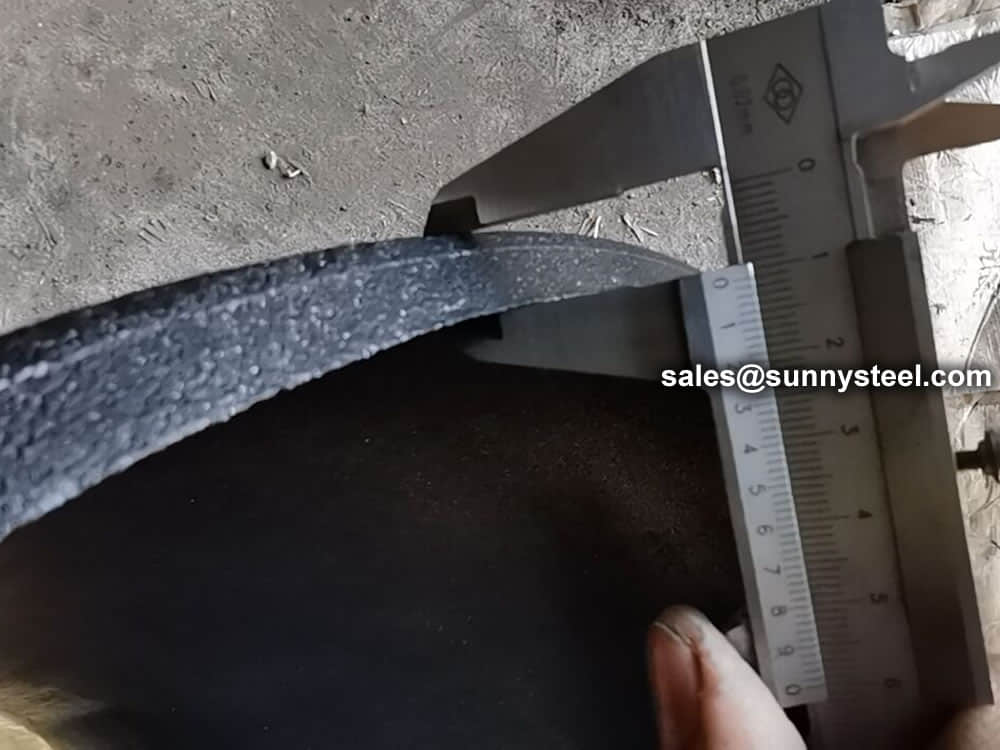
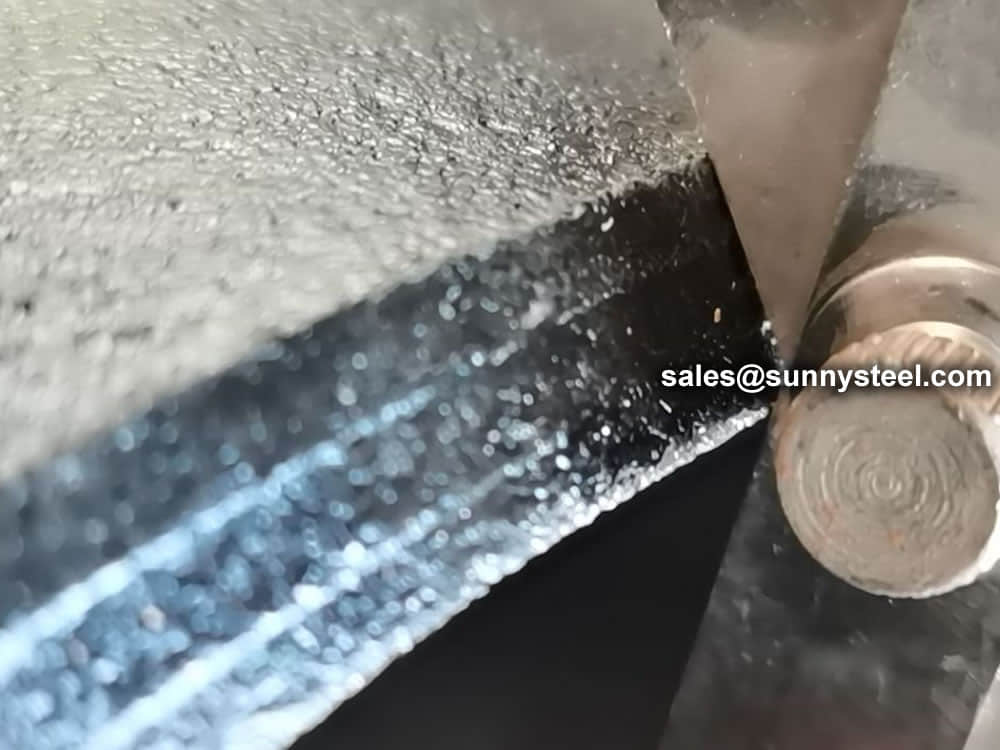
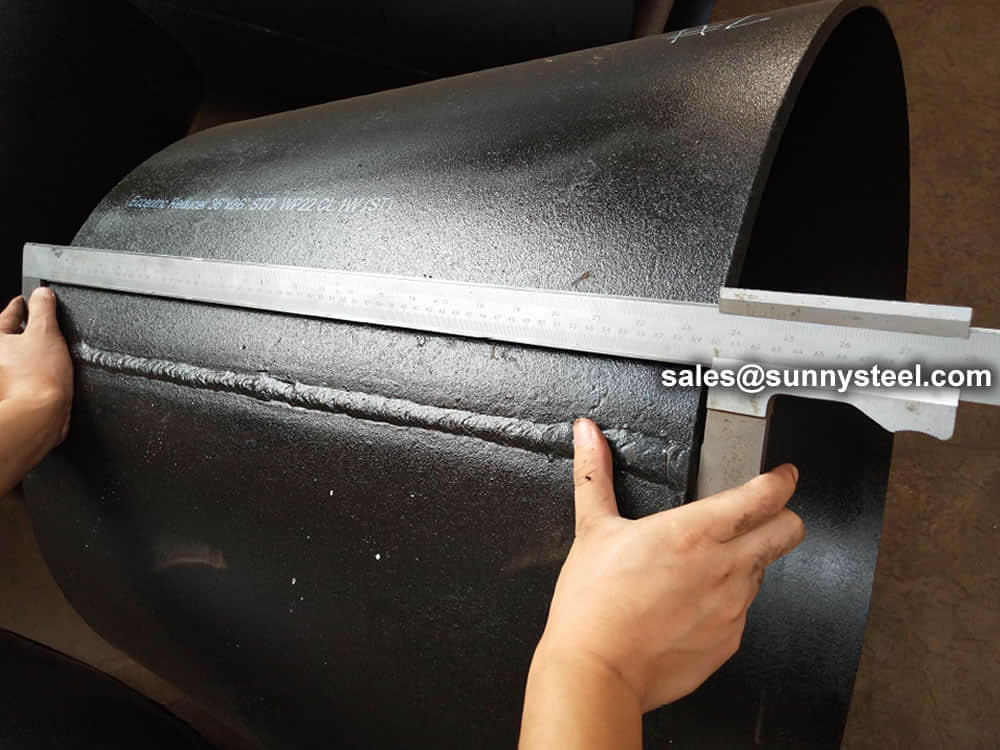
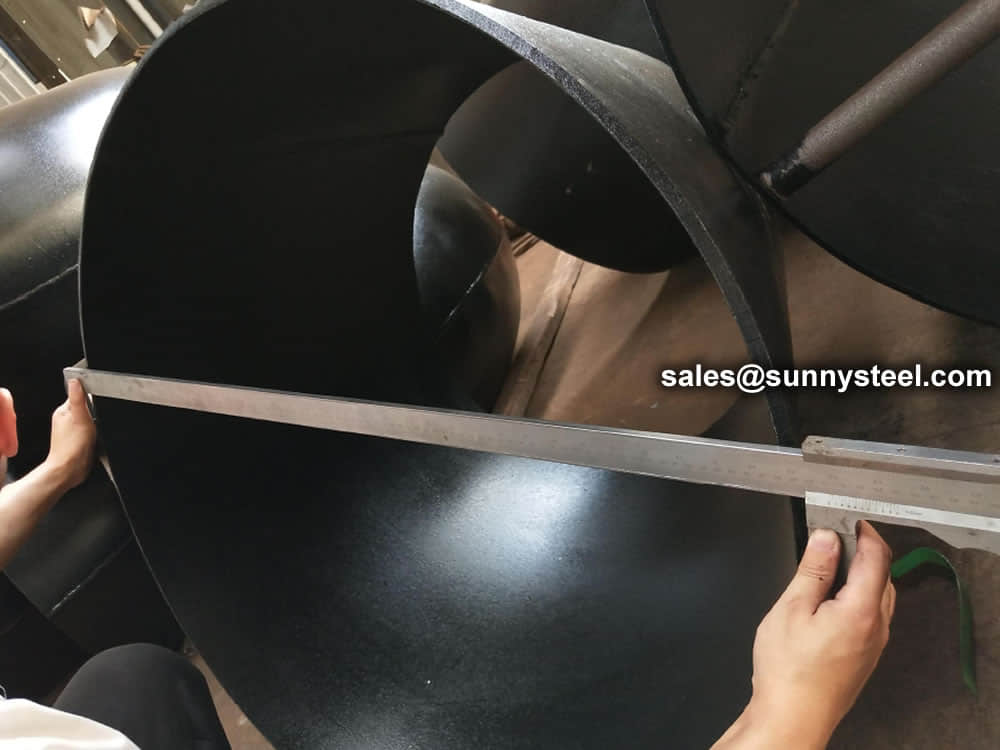
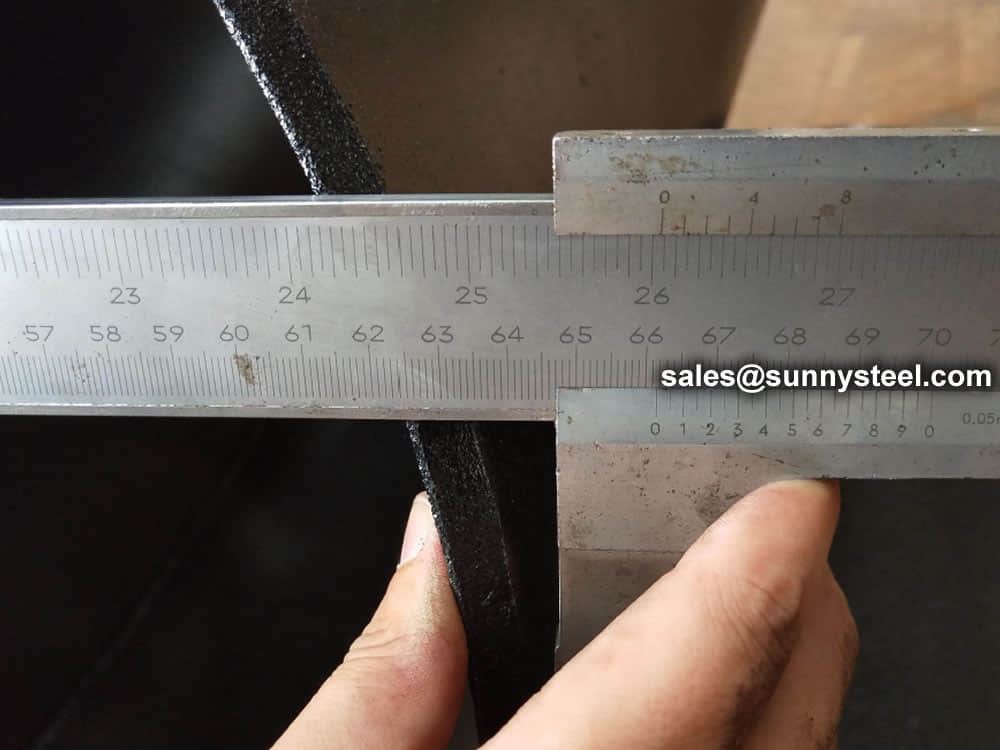
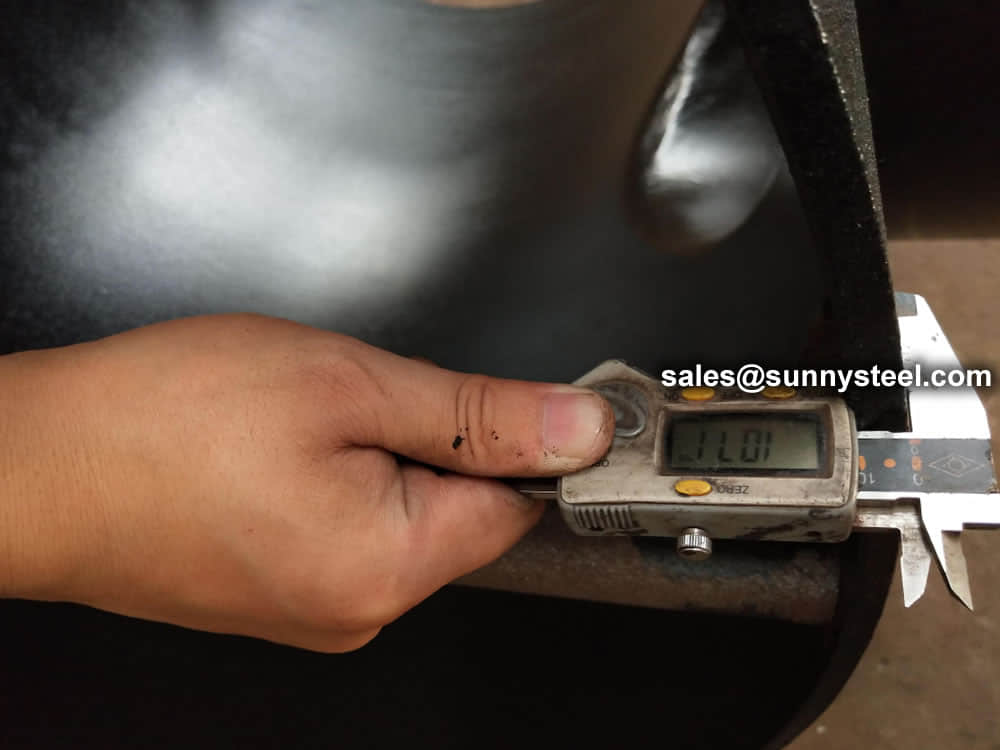
For packing of carbon steel flanges with painting,we would use the bubble wrap to protect the painting.For flanges without painting or oiled with long-term shipment,we would suggest client to use the anti-tarnish paper and plastic bag to prevent the rust.

When you partner with Sunny Steel, you can stop worrying about meeting deadlines thanks to our responsive and timely service. You'll also say goodbye to unnecessary shopping around. Instead, you'll get white glove service from an expert who understands your needs and can get you the materials you need quickly.
